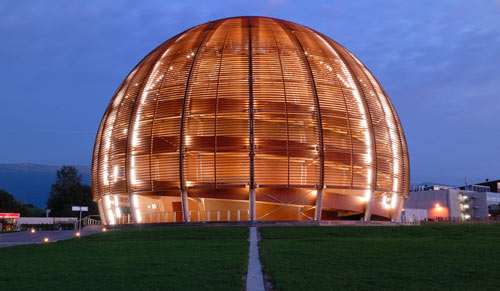You are hereBlogs / WcP.Scientific.Mind's blog / Biggest physics experiment in history underway: Large Hadron Collider passes operational test, fires first beam
Biggest physics experiment in history underway: Large Hadron Collider passes operational test, fires first beam

(quote)
There was screaming and whistling in physics labs and auditoriums outside Geneva - and around the world - Wednesday, as scientists whooped it up out of sheer joy.
![]()
The reason: relief. After 15 years of preparing, their $8-billion machine worked when they finally hit the on switch, beginning an experiment to recreate matter from the big bang - the beginning of the universe. The Large Hadron Collider (LHC), a 27 kilometer (17 mile) long particle accelerator straddling the border of Switzerland and France, is the biggest and most complex machine on Earth. Its energy will be nearly 10 times greater than the U.S. Fermilab, the current record-holder.
![]()
The LHC passed its first real operational test today by successfully herding a beam of protons all the way around the 27 kilometer ring lying 175 meters below the border between France and Switzerland. In fact, the first test was so successful that they fired another beam around the other way - proving the capacity to generate two counter-circulating beams of protons, which will ultimately be guided into collision with each other inside of one or another of the various detectors located around the ring.

In the coming months, scientists will carefully bring the LHC up to full capacity. The next crucial test will be their ability to "grab" the photons magnetically and concentrate them in small, tight packets. Next, they will accelerate these packets around the ring multiple times, ultimately reaching speeds of approximately 0.999999 times the speed of light. Finally, by colliding together two such highly accelerated, counter-rotating packets, the LHC will yield particle collisions of unprecedented energies, opening up a whole new world of high-energy physics experiments.
![]()
Right now, physics has a list of particles known to exist - electrons, quarks, and so on. But one particle that should exist has never been observed. Finding this "Higgs boson" particle would confirm they really do know what matter is made of. There's also a hope of finding dark matter, a type of matter we can't see, but which we observe indirectly. Its gravity pulls ordinary matter on the scale of whole galaxies. In the coming months, beams of particles will crash together in the giant tube, and physicists around the world will shift through the wreckage looking for secrets of the universe. "There's the potential for fantastic discoveries," Nigel Lockyer, director of TRIUMF, Canada's national laboratory for particles and nuclear physics, told a standing-room only crowd at the Vancouver lab where researchers many of them bleary eyed - gathered to celebrate. "I've been up since 2 a.m.," said physicist Timothy Meyer.

(unquote)
Photos courtesy of Maximilien Brice, Claudia Marcelloni, Michael Hoch / CERN,
Original Source: Boston Globe, S.F. Science Examiner and Canada.com
Related Article: Scientists Start World’s Largest Particle Collider


















